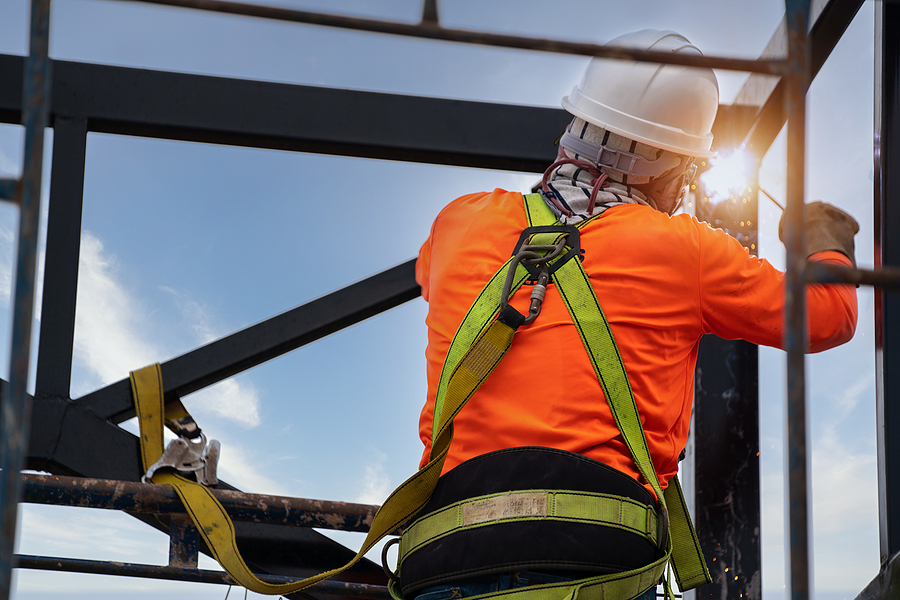What are the Primary Things to Know About Workplace Fall Protection Safety?

Every business needs to prioritize fall protection safety.
Make sure your employees maintain proper care and caution using workplace fall protection safety equipment when performing tasks at elevated heights. The following discussion presents essential safety tips for employees who work at elevated heights.
Hazards Associated with Working at Heights
The biggest safety risk for employees working at elevated positions is falling from those heights. A tool or piece of equipment that falls from a height can result in serious harm to people or even fatalities.
Tools dropped from sufficient heights become unusable which results in expensive unnecessary repairs for the company.
Workers who feel uncertain while using ladders or fall protection gear tend to perform their tasks in a hurried and careless manner. Through proper working-at-heights training workers develop the needed confidence to maintain focus on their tasks.
Fatal falls caused over 400 deaths in 2023 according to statistics from the U.S. Government’s Bureau of Labor Statistics. Workplace fatalities include falls within the category known as OSHA fatal four.
The industries that experience the most fatal falls include roofers electrical power-line installers and repairers and structural iron and steelworkers.
- Roofers
- Electrical power-line installers and repairers
- Structural iron and steelworkers
How High Is Classified as Working at Height?
A work environment at height describes any location where there exists a potential danger of falling.
OSHA defines working at height to be any workspace four feet above ground level or higher in general industry environments. Specific industries operate under their own unique standards for working at height.
Prominent working at height examples include roof work and elevated platform tasks but this category also extends to ladder work and certain tall stepladders. Safety must be the foremost concern for employees who perform tasks at elevated positions.
Is Working at Heights a Safety Hazard?
OSHA defines a hazard as follows:
“A hazard is the potential for harm. A hazard typically represents a condition or activity that can cause injury or illness when it remains uncontrolled.”
Working at elevated surfaces presents clear opportunities for worker injuries. Injuries at work frequently result from incidents involving height. Falling from a height represents a distinctively deadly type of accident.
Managers need to address fall protection safety first and implement risk reduction strategies for their workers. Reach out to Safety Counselling to obtain assistance from our team of safety risk management consultants.
What Is a Height Work Permit?
The Height Work Permit serves as an administrative tool to oversee worker safety during height-related tasks. A working at height checklist must be part of the permit. The checklist should incorporate PPE inspection procedures along with OSHA fall protection training requirements and regulatory acknowledgement.
Workers must finish all checklist items before gaining authorization to work at elevated locations.
When Is Fall Protection Safety Equipment Required?
OSHA requires fall protection at different levels. The minimum height for implementing safety precautions stands at four feet. It changes depending on the industry:
- Four feet for general industry work
- Five feet for shipyards
- Six feet for construction job sites
- Eight feet for long-shoring operations
Do My Employees Need Working-at-Heights Safety Training?
Yes is the short answer to this particular question.
Many workers do not recognize the hazardous conditions present in their work areas. Workers who become too accustomed to their environment and tasks may lose situational awareness which can result in accidents.
Employers need to actively teach their workers the safest methods for performing their tasks. The training program should teach employees how to properly operate and evaluate their safety equipment.
Sharing fall safety tips in the workplace provides multiple advantages for both employees and employers.
Since fall protection safety requires collective responsibility each member must share fall protection safety tips with their workforce. By sharing these safety tips at work you can avoid accidents and boost worker confidence during height work.
By focusing on fall safety subjects you can ensure protection for your equipment as well. The loss of construction tools can increase project expenses and delay its progress. Workplace fall safety tips enable employees to effectively protect themselves and their equipment through mutual monitoring.
